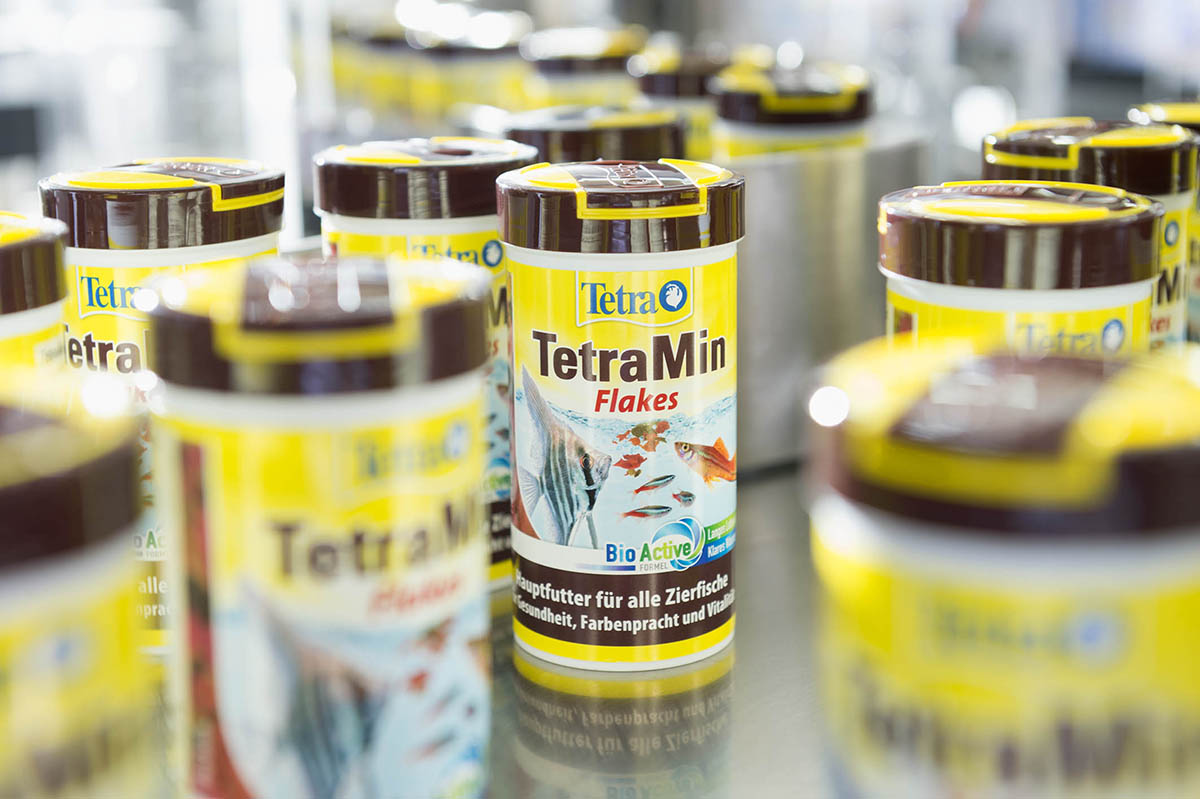The huge range of food products available makes it far from easy to choose the right fish food. For example, fish food comes in the form of flakes, granules, pellets, sticks and even as live or frozen food. What’s more, each food contains a different composition of vitamins and nutrients, which the fish need different concentrations of. You should therefore not hesitate to invest a little time in finding the right fish food. Choosing the right food is critical to your underwater inhabitants leading a contented life. After all, it helps to keep the fish healthy and improve their well-being. As all the inhabitants of your aquarium have different requirements when it comes to food, it is important to understand their needs.
The different dietary groups
Fish can generally be divided into three dietary groups: carnivores, herbivores and omnivores.
Carnivores (meat eaters) rely on a protein-rich diet. This can be given to them in the form of live or frozen food. They also like dry food in the form of flakes or tablets. Examples of carnivores include fighting fish and several bass species.
Herbivores (plant eaters) primarily require plant proteins in their diet. Examples of fish that are largely herbivorous include black mollies and several catfish species. Dry food and tablets should therefore be plant based for these fish. Fast-sinking products like food tablets are particularly suitable for catfish. They can also be given vegetables. However, there are no such things as exclusively herbivorous ornamental fish, so all food should also contain a certain amount of animal protein.
Omnivores (meat and plant eaters) make up the largest of the three groups. These primarily include goldfish, gouramis, guppies and swordtails. These fish like both plant and meat-based flake food and are therefore very flexible about what they will eat.
Varied feeding
As a general rule of thumb, you should give your fish a varied diet so as to eliminate the risk of malnutrition. The fish food should also be balanced and of high quality. One especially good way of achieving variety is through live food such as bloodworms or water fleas. In the summer in particular, these can be easily stored in a water butt. In the winter, frozen food is a particularly good option, especially red bloodworms or water fleas.
You should also ensure that food is varied in terms of its ability to sink.
For bottom-dwelling fish and, in particular, catfish, you should primarily opt
for fast-sinking fish food to prevent the other aquarium inhabitants from
eating it while it is sinking. You should also administer slow-sinking food
though as some fish species only swim near the surface and accordingly only eat
in this tank region.
Mouth-appropriate fish food
Fish food also has to be appropriate for the fish’s mouths. Fish have different sized mouths, which the food must be suitable for. For example, granulated food is an excellent choice for small fish. The shape of the mouth also affects the way food is eaten. For instance, fish with a superior mouth primarily feed at the surface, fish with an inferior mouth are usually bottom feeders and fish with a terminal mouth are generally mid-water feeders, i.e. they eat in the middle of the aquarium.
Different food types for different genera
In addition to different types of complete food, which are suitable for all ornamental fish, there are naturally also complete food products that are specially designed for individual fish species. For example, the broadest range of complete food products like mixed flakes are ideal for guppies and many live-bearing fish as omnivores. Several types of complete food in the form of flakes, pellets, sticks or granules are also suitable for cichlids. As described above, catfish primarily require fast-sinking food tablets. Special micro food is available for particularly small fish with a small mouth.
There are also special types of complete food for providing species-appropriate nutrition to crustaceans and shrimps, which can be kept in an aquarium of their own. There are also species that require a specialist diet, such as pufferfish, which primarily need snails when living an aquarium. These are not only nutritious for the pufferfish, but also wear down their teeth, which would otherwise get ever bigger as they constantly grow.
Frequency of feeding
We recommend feeding your underwater friends once or twice a day. Do not give them too much; only as much as they can eat in a few minutes. Excessive amounts of leftover food can cause the water quality to deteriorate. You can be economical with the amount of food you give your fish – it won’t do them any harm to have the occasional diet day. As such, you can even go away for a weekend without worrying about your fish; they can easily survive for a few days without food. There are also special food products for weekends or slightly longer holidays. The fish can eat these as required; they do not instantly dissolve in the water.
In summary therefore, when feeding your fish you should opt for a species-appropriate diet that takes into account whether the fish are carnivores, herbivores or omnivores. You should also feed your fish economically, providing them with a varied diet consisting of mouth-appropriate products. If you observe these four summarised points when feeding your fish, you will help them enjoy a healthy and content life.

